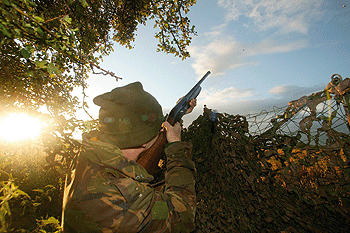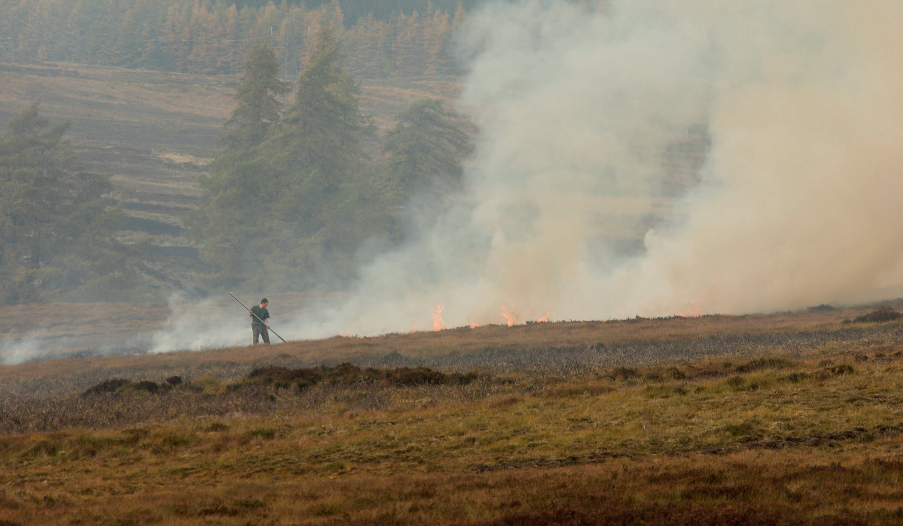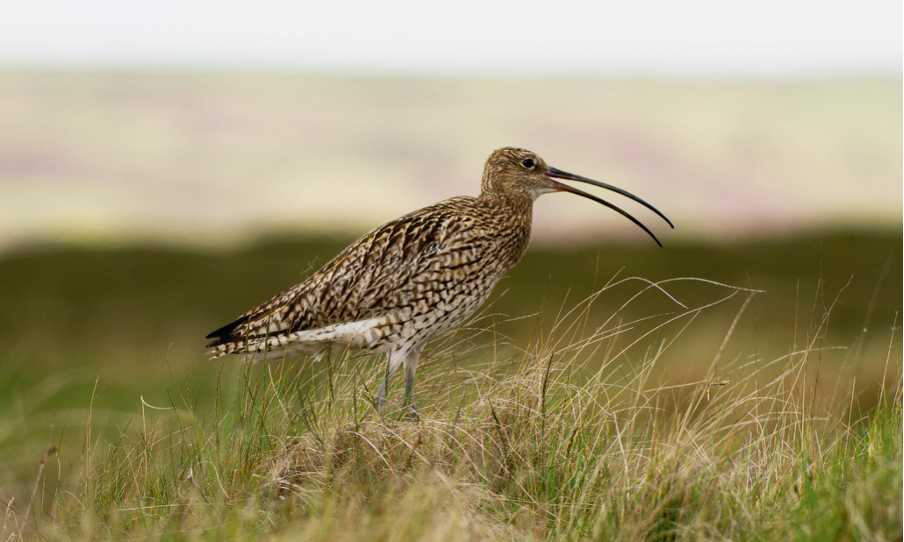News
Top tips on decoying
<strong>Advice on how to use decoys, crow calls and other kit to cull pigeons and crows</strong>
Would you like to appear on our site? We offer sponsored articles and advertising to put you in front of our readers. Find out more.
Anyone who has decoyed corvids or woodpigeon knows only too well that some days it?s easy, some days it?s tricky and other days it just does not work at all. It will be a gifted sportsman who works out exactly what goes on in the avian brain. On a recent trip to Lancashire, my old fishing friend, the appropriately named Nathan Crowe, invited me out to a farm where crows and woodpigeon had been piling in to some fields of oats.
The truth is, I don?t particularly like shooting corvids. Not because I think there is anything wrong with it ? they do indeed damage crops and kill songbirds. It?s just that I used to have a pet crow when I was a child, and can attest to what remarkably intelligent creatures they are, and great mimics, too. I recall that when my mother went round the garden picking daffodils, Butch ? as the crow was known for some reason ? would observe her actions and then spend a merry afternoon snapping the heads off all the remaining daffodils he could find. He was a great companion on fishing trips, either clinging to the handlebars of my BMX bike, or following along in the trees above. He eventually reverted to wild behaviour and shunned domestic life. Butch would disappear for days and then return briefly and became aggressive towards anyone but my father, swooping down and smacking people hard on the head with his bill. One day he never came back. I don?t know whether Butch was shot or whether he had decided it was time to plough his own furrow in the world of crows. Either way, he had made a fascinating pet, and it was a sad parting.
The electric crow
The farmer wanted rid of the crows, so we planned a dawn raid, just when the birds were coming off their roosts to feed, and we had several tricks up our sleeves to try to fool them. Nathan had borrowed an electronic crow from a friend. Before anyone howls about illegal electronic crow calls, this particular invention simply rocks back and forward like a nodding donkey, emitting no sound but the whirr of the motor. I also had a Primos crow call given to me a long time ago by Pat Carey, aka The Warrener. A selection of crow and woodpigeon decoys completed our kit. In the past, I have tried putting out a stuffed mink to see if the crows would mob it ? they didn?t. Others have used stuffed foxes or plastic owls in an attempt to attract their attention. These actions seem to have mixed results, but if you have a both-eaten fox or mink in the loft it may be worth dragging it out and giving it a try. It was to be a strange morning weatherwise. A beautiful dawn set the oats ablaze with a myriad golden hues, but it gave way to torrential rain, rainbows, dark skies and storm-tossed clouds of all shapes and sizes. The oat field was sodden when we got there and as the sun came up, crows could be seen circling hundreds of yards away, which added haste to our actions.
With the electric crow nodding away, I set about using the Primos call. I have had mixed results with the crow call. Sometimes they go berserk when they hear it, other times they ignore it, or drift nonchalantly past, only minutes later to return and sneak in from behind.
Overall though, it is an excellent piece of kit and can produce a variety of calls, depending on how it is blown.
A crow hove into view, above a far hedge, dropped towards the decoys and was felled in expert fashion by Nathan?s first shot from his Beretta. For a chap who doesn?t get much time to practise, the boy shot very well. Other crows drifted past, others curled round and one nearly landed on the electric crow. But there was no rhyme or reason to the crows? behaviour. The pigeon ignored the decoys completely, and in common with such times we tried to analyse the situation and address the intermittent results we were having. Was it the heavy rain? Were the decoys incorrectly placed? Maybe we had got there too early? But as both crows and pigeon were all heading in the same direction, we speculated that maybe a crop had been cut recently on another farm where they were going to feed and there seemed to be little that we could do about it. One thing that I have not tried, but which is supposed to work, is to use a pigeon magnet either with two crows or a crow and a magpie, and set it so that it looks as though the crow is chasing the magpie.
A taste for crow
A friend once showed me an American pamphlet from the 1950s on calling crows. I believe the crow is as damaging to agriculture in the US as the woodpigeon is in the British Isles. It was fascinating and I wish I had photocopied it. It had all the different notes to use with your crow call as well as when to use them and why. Accompanying the literature was a modern DVD of American crow shooting in orchards that ended with a crow barbecue. I have tried eating crow once by breasting them and deepfrying the breasts in flavoured breadcrumbs. Like most things cooked this way, they tasted like flavoured breadcrumbs. But the ked flies that flew off the dead crows and sought refuge in my hair and the pervading crow smell in my kitchen has put a halt to any further experiments. If you feel the urge to try crow cuisine, visit www.crowbusters.com, where you will find a whole host of crow recipes that should satisfy even the most demanding palate.
A morning?s bag
It was now 8am and both the pigeon and crow supply had dried up. Nathan had downed about a dozen crows and a couple of woodies and the last crow that thumped down was a scorcher of a shot. We decided to call it a day and waded through the waterlogged oats to collect the decoys.
After a fine fry-up back at my mother?s, there was plenty of time to pass the afternoon in a constructive fashion doing the backbreaking work of digging lugworms in Morecambe Bay, ready for the night tide and some flounder fishing.
Related articles
News
Hit pause on flawed rollout, urges BASC
BASC calls for delay to the Scottish government’s muirburn licensing scheme amid concerns from practitioners over the code’s workability.
By Time Well Spent
News
More power to police for tackling poachers
Following countryside organisations’ campaigning, penalties for illegal coursing have increased, with average fines up from £360 to £6,000
By Time Well Spent
Manage Consent
To provide the best experiences, we use technologies like cookies to store and/or access device information. Consenting to these technologies will allow us to process data such as browsing behavior or unique IDs on this site. Not consenting or withdrawing consent, may adversely affect certain features and functions.
Functional Always active
The technical storage or access is strictly necessary for the legitimate purpose of enabling the use of a specific service explicitly requested by the subscriber or user, or for the sole purpose of carrying out the transmission of a communication over an electronic communications network.
Preferences
The technical storage or access is necessary for the legitimate purpose of storing preferences that are not requested by the subscriber or user.
Statistics
The technical storage or access that is used exclusively for statistical purposes.
The technical storage or access that is used exclusively for anonymous statistical purposes. Without a subpoena, voluntary compliance on the part of your Internet Service Provider, or additional records from a third party, information stored or retrieved for this purpose alone cannot usually be used to identify you.
Marketing
The technical storage or access is required to create user profiles to send advertising, or to track the user on a website or across several websites for similar marketing purposes.



